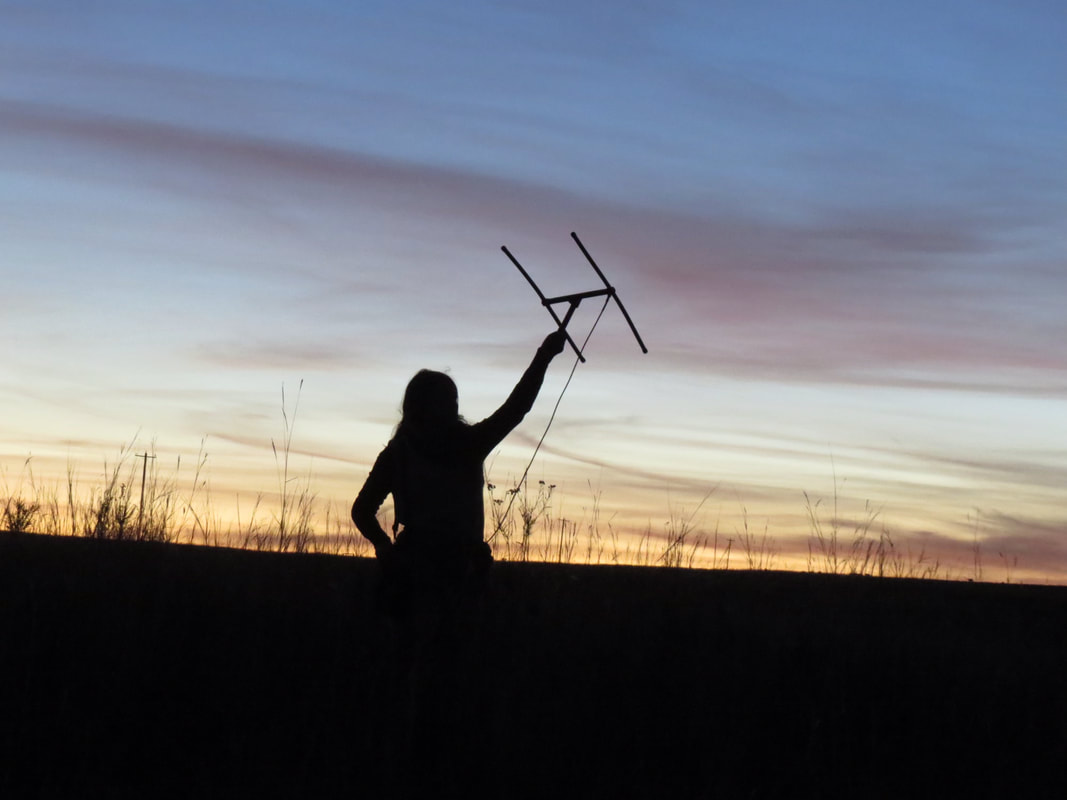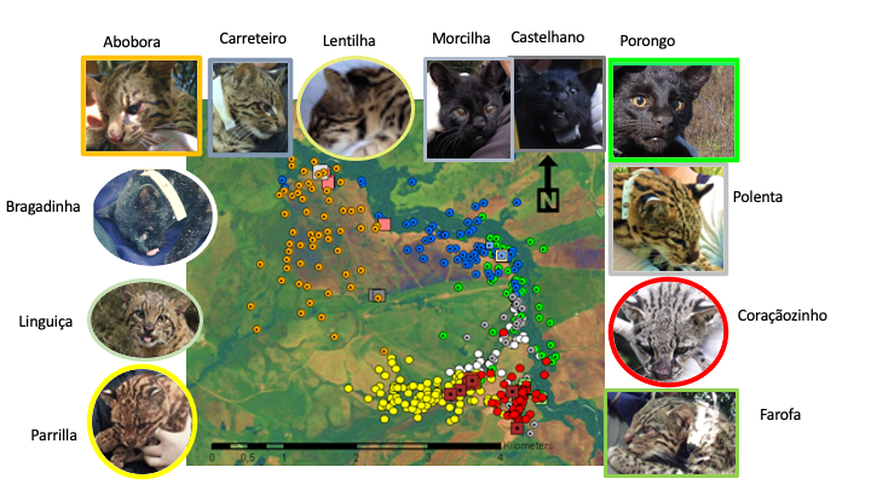Where Geoffroy's Roam
|
A group of researchers have been tracking Geoffroy's cats to learn vital information about the cat's behaviors in the wild. Thank you to Conservando os mamíferos carnívoros do Brasil and Dr. Tirelli for providing this amazing data and allowing us to share it!
The interactive map that shows latitude and longitude coordinates of Geoffroy's Cats in the wild. Zoom in on the map so see where 10 different Geoffroy's Cats roam near a protected environmental area in Brazil. Right above the map is a picture that shows you what each Geoffroy's cat looks like and the color they are on the map. We have also provided you with a table that gives you more information with a description of the cats including their age, sex, coloring and more. Dig into these page to see what researchers do and learn about the unique characteristics of 10 Geoffroy'c cats in the wild! |
Name |
Description |
Abóbora Orange Dot |
A spotted adult male who seems to have one of the most wide spread ranges of the cats in this study. Males also have been found to have a larger body mass compared to females making them a sexually dimorphic species. Another interesting finding is that males body size and home range did correlate with one another. The larger the male, the larger his home range. |
Baragada do Caverá Magenta Dot |
A melanistic older adult female cat. Melanistic is a color variation causing a lack of light color. Her under coat is black, with spotting still occurring on her coat as well. Geoffroy’s cats can live can live to be about 14 years old, and due to her teeth health she was determined to be older in age. |
Carreteiro Purple Dot |
An adult spotted male. In this study it was found that males have a larger home range compared to the females. DNA was also tested from each cat to study relatedness, and surprisingly found many cats were not related in this region, making it an out bred area, and important range for the future of these cats. This particular male seemed to over lap his home range with a couple other males, as well as females. |
Coraçãozinho Pink Dot |
Coraçãozinho, which also means little heart, is a spotted adult female. Females have a smaller home range compared to males, but all seem to over lap with one another regardless of sex and relatedness. Little heart seems to share her home range with both males and females. |
Linguiça Yellow Dot |
Linguiça is an older spotted female cat. You may notice only a few dots from her on our map. This shows how collecting data for research can be challenging. The researchers try to get as many data points as possible, but sometimes it is hard to do this. |
Farofa Lime Green Dot |
Farofa also means crumbs, is a sub adult spotted male. He was seen with his mother during this study. It was observed that kittens will stay with their mothers until about 9 months of age, learning important hunting skills and how to evade danger. Many of these cats learn to avoid road ways, which is one of their leading causes of death. |
Lentilha Green Dot |
A spotted adult female Geoffroy’s cat. She seems to enjoy her time most by the Arroio Cavera river. Geoffory's are excellent swimmers and seem to prefer areas close to rivers as well as close to riparian forests. These areas are plentiful with small rodents, fish, and amphibians which are favorite food items! |
Parrilla Blue Dot |
A spotted adult female. Her home range seems to over lap the most with Porongo, a melanistic male. During this study it was found the females typically just had one kitten, which could be a good sign because this range is protected and hunting is prohibited. These cats have less threats to face than other studies where females have more kittens, which correlates with higher human conflict in those regions. |
Polenta Black Dot |
Polenta is a spotted adult male. His home range over laps most with two other females. This study taught us more about the social dynamics between these cats. Geoffroy's are a solitary animal, but seeing many over lapping home ranges between many unrelated adult males and females showed a higher tolerance for socializing between ranges than what was previously thought! |
Porongo Dark Red Dot |
A melanistic adult male. His range overlaps with many of the other cats during this study! And being a melanistic cat may be to his advantage when it comes to human conflicts in this region! Melanistic cats do really look like typical black house cats and are often left alone by farmers. Understanding the patterns of variation in the biology and ecology of Geoffroy’s cat across its range should help design effective conservation strategies that allow the long-term persistence of this felid in the variety of habitats in which it occurs. |

